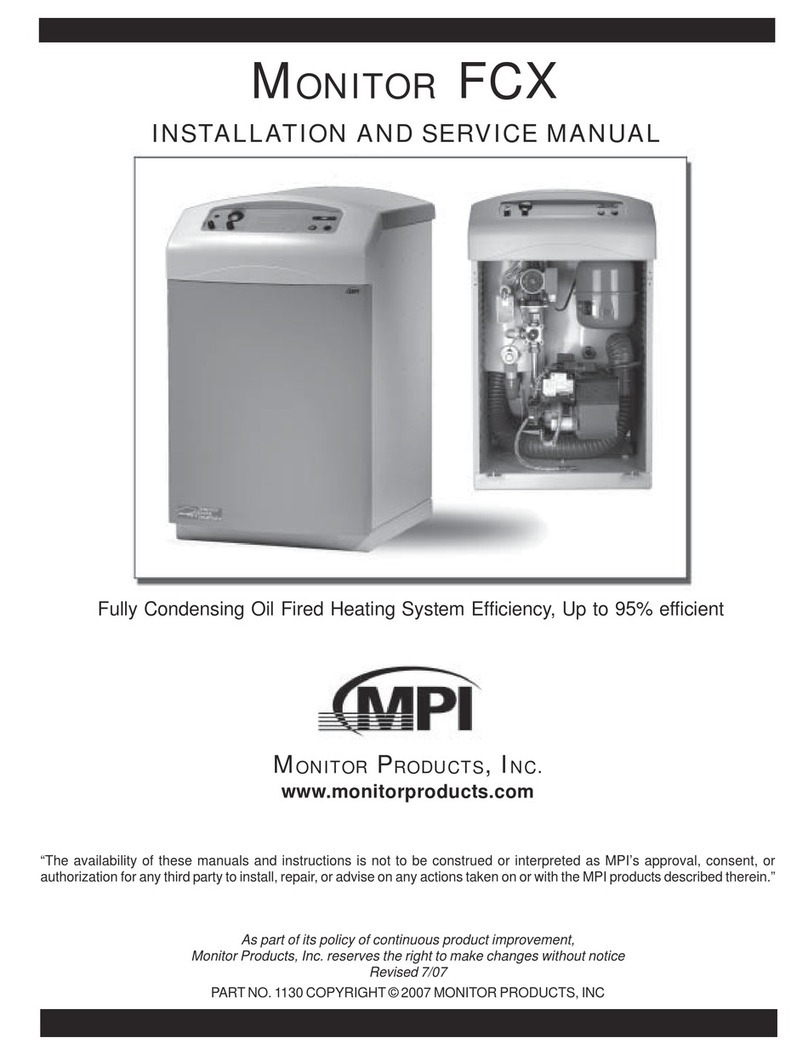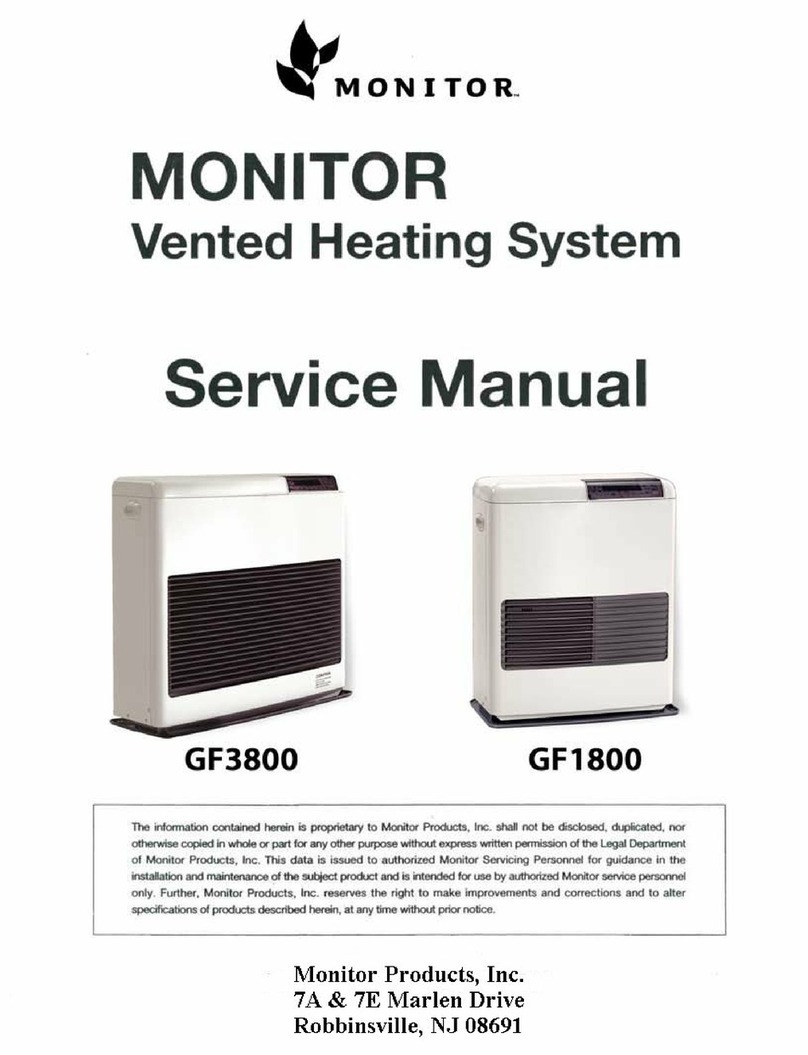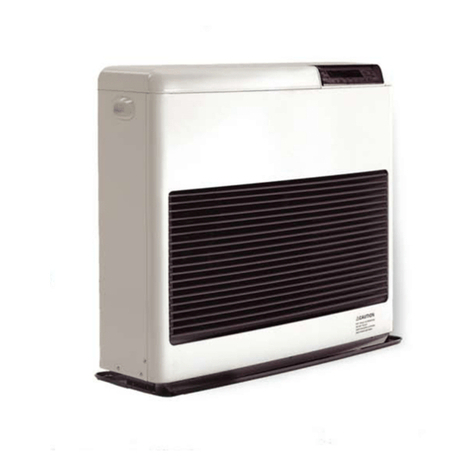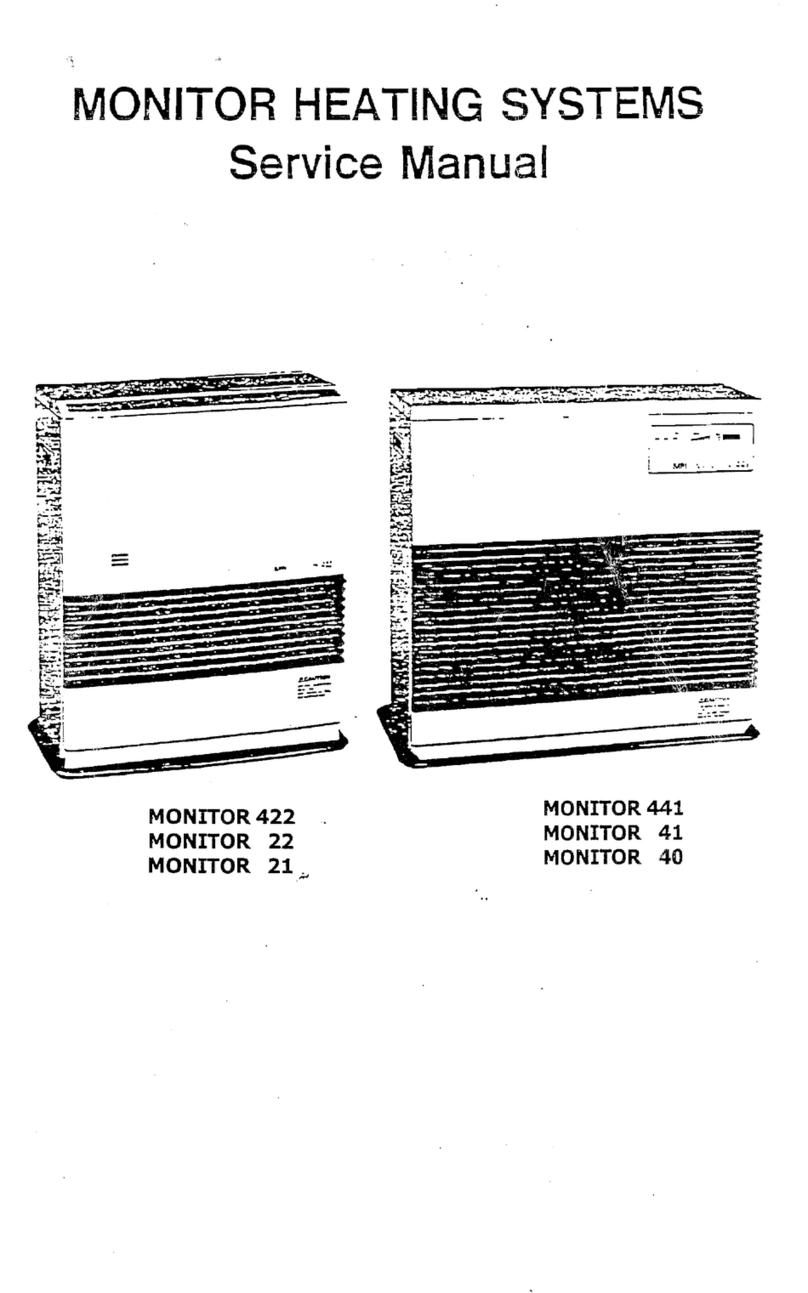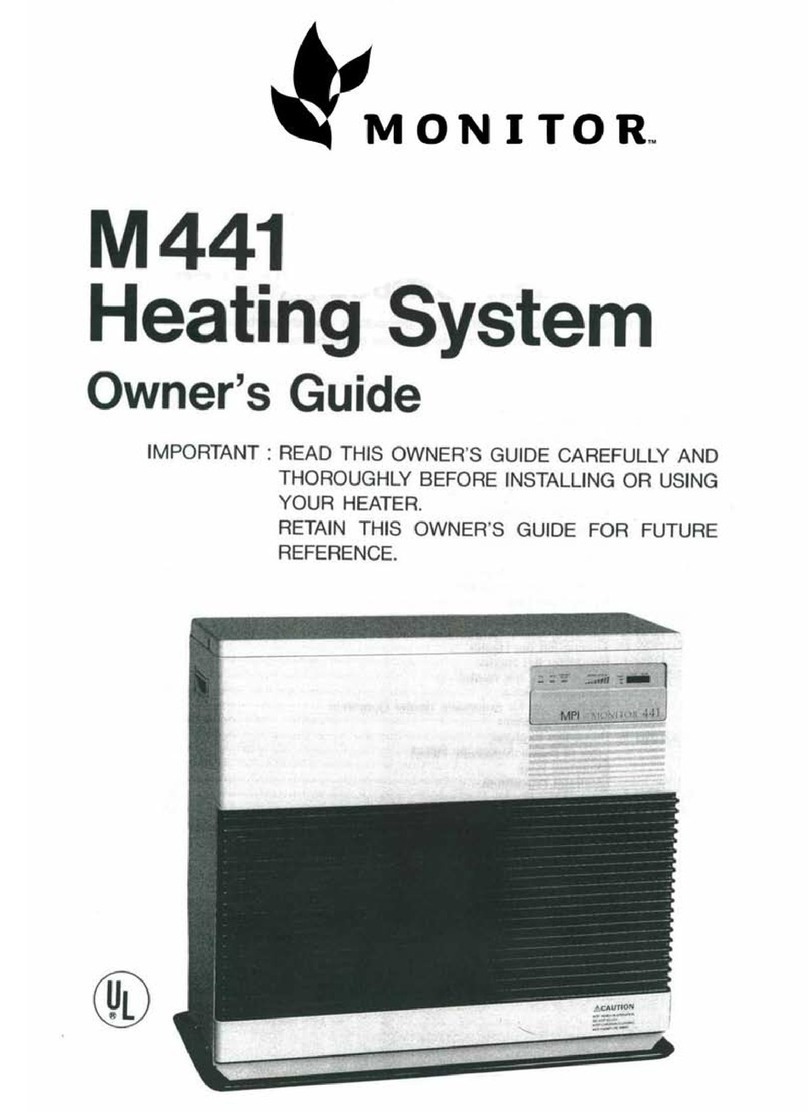SECTION
B
SPECIFICATIONS
ModelMonitor2200
FuelType
Red
dyed
or
ClearKerosene
orLow
Sulphur
*1
Oil
Heater
Efficiency
93%*
HeatRating
High:22,000
BTU/hour
H.Medium:
17,400
BTU/hour
L.Medium:
12,400
BTU/hour
Low:9,600
BTU/hour
Heater
Output
High:
18,260BTU/hour
H.Medium:
14,440BTU/hour
L.Medium:
10,290
BTU/hour
Low:7,970BTU/hour
FuelTankSeparate(Capsuletankoptional)
FuelConsumption
High:0.164
Gallon/hour
H.Medium:0.13
Gallon/hour
L.Medium:0.09
Gallon/hour
Low:0.07
Gallon/hour
Power
Source
120
Volts
AC;
60
Hz
Power
Consumption
Ignition:
250
Watts
Operational
Watts(Average)
Heated
Air
Delivery
High:
176
Cubic
feet/minute
H.Medium:
176
Cubic
feet/minute
L.Medium:
126
Cubic
feet/minute
Low:
113
Cubic
feet/minute
Vent
PipeHole
2>2-inches
Diameter
Dimensions
Weight
Height:26.0
inches
Width:20.9
inches
Depth:
13.0
inches
55
Pounds,empty
*
When
considering
heat
of
condensation
is
lost,
then
thenet
efficiency
is
88%,A.F.U.E.
is84%
SPECIALFEATURES
AUTOMATIC
IGNITION
MEMORY
BACK
UP:Set
memory
canbe
kept
in
case
of
powerfailure
forupto30
minutes.
DUAL
BLOWERS:Separate
fans
for
combustion
and
room
air
circulation.
THERMOSTATICALLY
CONTROLLED
:
Adjusts
tothe
desiredroomtemperature.
BUILT-IN
TIMER:
Heaterwillautomaticallyoperate
as
programmed
bythe
user.
AUTOMATIC
RESETAFTERPOWER
FAILURE:Heater
willautomaticallyresumeoperationafterpower
is
restored.
INDICATOR
LIGHTS:
Easy-to-seesignalsshowwhen
heater
isin
operation,whentimer
is
activated,
and
when
the
burner
is
operating.
CHOICE
OF
FUEL
SUPPLY:
Separatetank
or
Capsule
tank
optional.
MULTIPLEHEAT
EXCHANGER:
Extracts
88%of
heat
from
burner.
CLEAN
OPERATION:
Products
of
combustion
are
vented
outside.
CONSUMES
NO
ROOM
AIR:
Airfor
combustion
is
drawn
from
outside.
EASY
INSTALLATION:
Includes
all
partsrequired
for
standardinstallation.
SAFETYFEATURES
SAFE
RE-LIGHTING:Heater
will
not
restartuntil
its
combustionchamber
has
cooled.
ELECTRICAL
PROTECTION:
Heaterautomaticallyshuts
off
inthe
unlikelyevent
ofa
malfunction
inthe
electricalcircuitry
or
disruption
ofthe
powersupply.
NO
EXHAUST
IN
ROOM
:
Products
of
combustion
are
dischargedoutdoors.
FLUE
PIPE:
Outside
airis
drawnthrough
a
pipe-within-
a-pipe
ventingsystem.
This
processpreheats
combustion
airand
regainsheatfromexhaust
gases.
£±
CAUTION:ALTERNATE
POWER
SOURCES
The
Monitor2200
may not
operate
when
powered
by
sources such
as an
auxiliary
generator,
UPS
(Uninterruptedpower
Source),
inverters,
etc.Check
with
your dealer
for
guidance
on
specific
applications.





